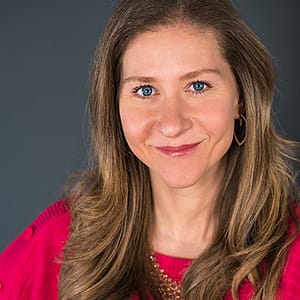With over ten years of experience coaching public company CEOs, I’ve observed a critical obstacle often hindering their peak performance: ineffective senior leadership teams. There’s a common misconception that merely having the right individuals in key positions guarantees they will successfully and seamlessly move the organization forward. However, like how sports teams may initially seem unbeatable on paper with the best players on their roster but struggle until they practice together and build trust, many leadership teams with strong executives face inefficiencies until they have put in some additional work to collaborate and understand each other. Shockingly, statistics show that 65% of senior executives perceive their teams as ineffective, with a mere 18% acknowledging their leadership team as high-performing.*
Major implications of not having the right and/or having an underperforming leadership team include:
- A CEO who is focused on the wrong priorities that do not advance the business
- A CEO who is playing multiple C-Suite roles
- A drained and depleted CEO
- A siloed senior leadership team, absorbed in their own priorities, without aligning with the culture including the mission, vision, purpose, and core values
One of the first questions I ask CEOs when I begin a coaching engagement with them is: “Do you have the right team in place?” If the answer is yes, I ask them: “Is your team of the ‘right people’ operating at peak performance?”
One of the biggest mistakes I see in executive team structures is the outdated management style of the hub and spoke model. This is where all information and decisions go through the leader at the center, the hub. The spokes are the other team members who direct everything to the one leader operating at the hub.
In this style of leadership, the team brings all decisions and issues to the CEO to work through and move the business forward. This creates silos, puts incredible pressure on the CEO to be overly involved in every issue and decision, impedes collaboration, and does not help develop or empower other leaders. It also drains the CEO’s energy resources. As the C-Suite and leaders throughout the business use this model, it results in a fractured organization. It also can hinder succession planning efforts.
Developing a cohesive team involves a shift in perspective and focus. So often, teams overemphasize the “what” that they produce. While a strong output is the ultimate goal, achieving the best results requires emphasizing “how” the work gets done.
Focusing on the “how” involves prioritizing team connection and dynamics. I encourage CEOs to create space in team meetings or offsites to attend to the “how”: how we collaborate, communicate, interact, and complete the work. I ask them to reflect on how to maximize and improve their team effectiveness with the following questions:
- How do we work best together?
- What are our individual strengths and how can those be leveraged across the team?
- What is really working well? What do we need to improve to be more effective?
- How do we communicate most effectively?
- How do we build a healthy executive team culture that can ripple through the organization?
When executive teams work seamlessly together, setting an example and role-modeling effective collaboration for the organization, it has a positive ripple effect. Ultimately, the executive teams that function at peak levels deliver superior results and have the workplaces and cultures employees want to be a part of.
*Center for Creative Leadership, An Underperforming Senior Leadership Team Yields an Underperforming Organization
 Jamie Shapiro is the CEO of Connected EC, a C-suite coaching firm focused on creating thriving leaders, connected teams, and positive cultures. She is a Master Certified Executive Leadership Coach, Organizational Psychologist, and bestselling author of Brilliant: Be the Leader Who Shines Brightly Without Burning Out. Beyond her deep domain expertise and gift in executive leadership coaching, she is an extraordinary individual who represents our firm’s ethos, approach, and effectiveness. She and her team of coaches emphasize that leadership is a full-body experience, and they help their clients increase their vitality so that they can give their best to the things that are important in their lives, including their personal and business commitments.
Jamie Shapiro is the CEO of Connected EC, a C-suite coaching firm focused on creating thriving leaders, connected teams, and positive cultures. She is a Master Certified Executive Leadership Coach, Organizational Psychologist, and bestselling author of Brilliant: Be the Leader Who Shines Brightly Without Burning Out. Beyond her deep domain expertise and gift in executive leadership coaching, she is an extraordinary individual who represents our firm’s ethos, approach, and effectiveness. She and her team of coaches emphasize that leadership is a full-body experience, and they help their clients increase their vitality so that they can give their best to the things that are important in their lives, including their personal and business commitments.
